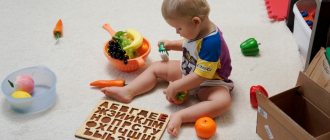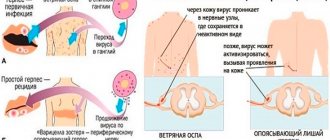Author, editor and medical expert - Klimovich Elina Valerievna.
Number of views: 468 326
Last updated date: 12/20/2021
Average reading time: 17 minutes
- Therapeutic diet
Constipation (from the Latin constipatio - accumulation, accumulation) can occur in a child at any age1, 3. It is associated with a slowdown in the movement of feces through the intestines3, 4. This is one of the most common “children’s” problems4, but many parents do not recognize it or They believe that a child at 3 or 4 years old will “go away on its own”, without medical help. Some parents do not consult a doctor on time3, 5 because they cannot understand whether the baby goes to the toilet often enough, whether the density and volume of feces is normal1, 3, 5.
Up to contents
Constipation criteria
In babies under one year of age, stool has a mushy consistency.
According to the criteria adopted this year in Rome at the European Gastroenterology Week, chronic constipation in childhood is considered to be a rare rhythm of bowel movements that lasts for more than three months.
For children under 3 years of age, a deviation is considered to be stool occurring less than 6 times a week, and for older children - less than three times a week. In this case, chronic stool retention should be accompanied by the following symptoms:
- stool is firmer than usual and there is too much (or too little) of it
- the child has to push very hard,
- Older children claim that they have not completely emptied their bowels.
In babies under one year of age, stool should have a soft, mushy consistency. Before the introduction of the first complementary foods, stool in most cases coincides with the number of feedings, provided that the child is fed only breast milk.
Children who receive artificial or mixed nutrition from the first days of life have rare bowel movements - no more than twice a day. With the start of complementary feeding, stool becomes less frequent even in children who are breastfed (up to 2 times a day).
Children older than one year should ideally have bowel movements every day. In babies under one year of age, pseudoconstipation can be diagnosed, when rare stools are caused by a lack of milk from the mother, or the child sucks sluggishly and often burps.
Constipation in young children can occur temporarily during hyperthermia, when due to elevated temperature the stool becomes severely dehydrated. The same situation can arise if there is an excess of calcium in the child’s diet or with hypervitaminosis of vitamin D.
Causes of constipation in children
The reasons for the absence of bowel movements in children are divided 1, 3, 6 into two groups:
- Organic3 - arising against the background of any disease, pathology of the intestinal structure.
- Functional3, 5. Arise due to improper functioning of the gastrointestinal tract, due to reasons not related to problems of the digestive system.
The intestinal walls periodically make wave-like movements. This is called peristalsis2,3 and is necessary to move digested food down and out. If peristalsis slows down, becomes slow and sluggish, that is, the tone of the intestinal wall decreases, then they speak of atonic constipation3, 6. And if the tone becomes so strong that spasm occurs and peristalsis stops, then this condition is called spastic3, 6.
Up to contents
Clinical manifestations of functional stool retention
A characteristic clinical symptom of constipation is the absence of gas discharge.
In most cases, functional constipation develops sequentially, with stool disturbances observed for three or more months.
Sudden, prolonged retention of stool for more than three days is considered an acute manifestation of constipation.
Each such case requires careful attention so as not to miss a life-threatening pathology for the child - intestinal obstruction that occurs due to inflammation, possible accumulation of helminths or a tumor.
A characteristic clinical symptom of obstruction is the absence of gas discharge. To differentiate this pathology from organic constipation, anomalies of the large intestine should be immediately excluded during examination.
Signs and symptoms of constipation
- abdominal pain, often bursting, aching, sometimes colicky
- bloating
- change in stool shape and consistency
- excessive flatulence
- unpleasant odor of gas and stool
- there may be pain when defecating
- straining during bowel movements
- there may be blood in the stool - on the surface of the stool or in the form of traces on a napkin (indicative of an anal fissure)
If constipation is not eliminated and bowel movement is not established, there is a risk of coprostasis (formation of fecal stones) and fecal intoxication:
- loss of appetite
- lack of energy
- general malaise
- depression, irritability
- nausea, vomiting
- skin symptoms - dryness, rash, peeling
- fecal incontinence, spotting stool
- urinary retention and incontinence due to pressure from the overfilled intestine on the bladder
- bleeding from fissures, hemorrhoids
Child examination
For constipation, a specialist prescribes a comprehensive examination.
When parents with a child suffering from chronic constipation consult a doctor, the specialist will prescribe a comprehensive examination.
First, a family gastroenterological history is collected from the parents and the child himself.
The doctor is interested in the developmental history of the little patient, possible behavioral disorders, stress factors of family upbringing, the child’s diet, and previous treatment.
Then an examination is carried out to identify clinical symptoms of constipation: determining the color and elasticity of the skin, the size of the abdomen, and the condition of the tongue. On palpation, the presence of feces in the colon and its soreness are noted.
Examination of the area near the anus allows you to see skin irritation, the presence or absence of a crack. Laboratory and instrumental studies are carried out:
Treatment of constipation involves achieving the following goals:
1. Normalization of stool consistency (soft, painless stools)
2. Regularity of bowel movements (prevention of re-accumulation of feces)
Treatment of constipation is a sequential, complex, individual process and consists of several stages:
- child and parent education
- correcting nutrition and drinking regime
- elimination of existing coprostasis using medications
- maintenance therapy
It is necessary to exclude factors that provoke and contribute to constipation (normalization of motor and eating habits, stopping taking medications that can cause constipation, identifying a food allergen, excluding or confirming a neuromuscular disease, celiac disease, etc.).
Lifestyle normalization includes:
- development of a conditioned reflex
- active lifestyle
- gymnastics
- training in light abdominal massage skills
- for small children - laying on the stomach, bending the legs towards the stomach.
Education is the first step in the treatment of functional constipation. It must be remembered that episodes of stool loss and encopresis (fecal incontinence) are not voluntary and should not be blamed on the child, who may already be scared and disoriented. In some cases, when the family situation is difficult, the help of a family psychologist may be needed.
It is important to understand that treatment for functional constipation can be lengthy, is based on trust in the doctor, partnership and requires patience. Modern laxatives, approved for children, will not make the intestines “lazy”, will not cause “addiction”, they enter the bloodstream in minimal quantities or are not absorbed at all and are safe for long-term use.
Correcting the behavior of a child with constipation is based on developing a toilet routine in order to achieve regular bowel movements. Defecation should be done at the same time every time. The urge to defecate is based on the gastrocecal reflex, which manifests itself in the morning 1 hour after eating. A child with constipation needs to spend 3-10 minutes on the toilet (depending on age). The child should be seated on the potty or offered to go to the toilet after each meal.
A prerequisite for effective defecation is to provide a good foot rest (a low bench on which the child can place his feet), which helps to increase intra-abdominal pressure.
If defecation is unsuccessful, the child should under no circumstances be punished and vice versa. The daily frequency of bowel movements can be noted in a diary, which can be reviewed at a routine visit to the doctor.
Treatment of constipation must begin with lifestyle changes, which include correction of diet, drinking regimen and physical activity.
Diagnostics
A pediatrician examines children who retain stool. If necessary, a pediatric gastroenterologist is involved in consultation. The specialist collects a detailed medical history and identifies predisposing factors, dietary changes, and concomitant diseases. To verify the cause of constipation, an instrumental examination of the gastrointestinal tract and laboratory methods are prescribed. The most informative:
- Finger examination
. Assessing the condition of the rectal ampulla is the first thing to do when a child is constipated. During the examination, fecal stones, large neoplasms, and places of greatest pain are determined. Before the examination, the abdomen is palpated to detect bloating, spasms, and an increase in the size of the sigmoid colon. - Ultrasonography
. Ultrasound of the abdominal cavity is a simple non-invasive diagnostic method that shows signs of inflammatory processes, abnormalities in the structure of the digestive tract, and suspicious neoplasms. Additionally, using an ultrasound sensor, a targeted ultrasound of the liver and pancreas is performed. - Radiography
. A survey X-ray of the abdominal cavity is quite informative and allows one to detect dilation of intestinal loops and signs of intestinal obstruction. To check the condition of the colon, barium irrigography is prescribed, which is performed after an enema. Sometimes radiography of barium passage through the gastrointestinal tract is used. - Coprogram
. Microscopic examination of stool includes determination of undigested food particles, fatty acids, red blood cells and white blood cells. Bacteriological culture of stool is required to exclude dysbacteriosis. The stool is examined for helminth eggs and the presence of protozoal infections. - Laboratory indicators
. If a child has persistent constipation, a biochemical blood test and liver tests are performed to rule out concomitant hepatobiliary disorders. If endocrine diseases are suspected, the hormonal profile is examined. Sometimes a highly specialized toxicology blood test is indicated. - Additional methods
. To exclude organic pathology and intestinal tumors, sigmoidoscopy or colonoscopy is recommended. To diagnose Hirschsprung's disease and UC, a biopsy of the intestinal wall is taken during the study. If there are signs of nervous system disorders, you need to consult a neurologist, EEG and EchoEG.
What can you do at home?
You should start with massage and physical therapy techniques . This stimulates intestinal peristalsis. Place your baby on his tummy before feeding. The massage is also carried out before feeding: circular movements on the tummy in a clockwise direction are recommended. After the “meal”, do not put the child to bed immediately - hold him in what is called a “column”, that is, vertically. There is no need to throw it in the palm of your hand, as many people do, as it can provoke a burp. To stimulate the intestines and the release of gases, straighten your baby's legs and at the same time bend them towards the tummy. Repeat 10-15 times, pressing firmly onto the area below the ribs. Then do the same, but with each leg separately. If the baby holds his head well, take it under your knees and hold it over the diaper or toilet.
Have you already introduced complementary foods into your child's diet? This may help combat constipation. Carrots, zucchini, pumpkin are natural laxatives . But mashed potatoes and cereals are not suitable in such cases, they “fix” the intestines. Suitable as a laxative are dried apricots, as well as prunes, but only from 5 months of age. Stimulation of the anus is effective in the fight against constipation. Insert a cotton swab lubricated with Vaseline , but shallowly, 1 cm, and carefully rotate. gas tubes help with constipation and colic. They are inserted to a depth of no more than 3 cm. There is an opinion that frequent use of tubes is addictive. Some people agree with this statement and others do not, but experts recommend not to abuse them.
None of these methods work? Then adopt a “radical” method - an enema . Pre-boil the rubber bulb, then fill it with water at room temperature and lubricate the tip with Vaseline. Remember: you cannot use soap, especially laundry soap, for lubrication; it can burn the baby’s delicate mucous membranes. Having laid the baby on its side and bending its legs at the knees, insert the tip of the bulb 2 cm into the anus and slowly release the water. It is advisable that at this moment someone helps you hold the baby. After the procedure, he must lie down: hold his buttocks for another 2-3 minutes. An alternative to an enema is a rectal suppository with glycerin . Divide it into 4 parts, round it with your fingers and insert one, making sure that the baby does not push it out.
Daily regimen for constipation
Despite the significant role of diet, it may not be effective if the child does not develop the habit of emptying his bowels at a certain time, preferably in the morning (6-9 hours). This habit should be developed and reinforced. To do this, immediately after getting up in the morning, the child drinks 0.5-1 glass of cold water or vegetable juice on an empty stomach.
If there is a urge to stool, the patient empties the intestines as much as possible. If there is no urge to defecate, you should first resort to physical exercise, breakfast and after a while go to the toilet. A squatting position is assumed, with legs tucked to the stomach. The act of defecation is aided by self-massage of the abdomen with hands, rhythmic retraction of the anus, and pressure between the tailbone and the anus.
Appropriate conditions must be created for the child. If the child is small, then it is better to sit him not on the toilet, but on the potty (previously washed clean and warmed slightly above body temperature). Restoring the act of defecation is a long-term task, and it must be solved by parents and adults in direct contact with the child, persistently, without emotional outbursts.
Mother's diet
Source: Alexander Dummer: Pexels
Breastfeeding mothers often wonder how their diet affects the quality of their breast milk and how choosing foods for it can affect the baby's digestive system. However, most women do not need to restrict their diet while breastfeeding and should aim for a nutritious and varied diet.
In some cases, infants may seem to avoid feeding after the mother has taken certain foods. In this case, a woman can simply eliminate this food from her diet and return to it after stopping breastfeeding.
Important: Special recommendations include avoiding caffeine while breastfeeding. Caffeine is easily transmitted to the baby through milk. It reduces the amount of iron in milk, which can lead to iron deficiency anemia. It is recommended that a nursing mother consume no more than 400 milligrams of caffeine per day. The most caffeine is found in coffee and chocolate, and the least in tea.
A healthy diet while breastfeeding is essentially the same as a nutritious diet without breastfeeding. The main difference is that breastfeeding people need 450 to 500 extra calories per day. But if you want to lose weight after pregnancy, you can do without them, having first discussed this with your doctor.
A healthy diet for a pregnant woman includes:
- Fruits, especially rich in potassium and vitamin A (melon, banana, apricot, mango, oranges). Helps reduce the risk of constipation in both the child and the mother;
- Vegetables containing vitamin A and potassium (spinach, carrots, tomatoes, red peppers);
- Grain products, especially brown rice and whole grain bread;
- Protein-containing foods such as beans, peas, nuts, meat, fish, mussels.
Important: A nursing mother needs to drink a lot of water, especially in the first weeks after birth. Lack of fluid negatively affects milk production. A sufficient amount of water ensures the efficient functioning of the digestive system, helps food to be absorbed, which means breast milk will be well-balanced in nutrients. The higher the conditional quality of milk, the lower the likelihood of constipation in a child, since balanced milk improves peristalsis and fecal removal.
Infant formula for constipation
An example of a formula that promotes regular soft stools is Nuutrilak Premium COMFORT.
Oligosaccharides are also added to infant formula. They also use gum for this. It is a natural source of polysaccharides (dietary fiber), which regulate intestinal motility. In addition, it has a beneficial effect on the colon microbiota and its diversity. All this contributes to regular soft stools in the child. An example of such a mixture would be Nutrilak Premium Antireflux.
In complementary feeding dishes, preference should be given to vegetables and vegetable purees. Dietary fiber and vegetable fiber should be present in the child’s menu.
Fruits and fruit purees are not main dishes. They can be used as a dessert or as an addition to porridge.







